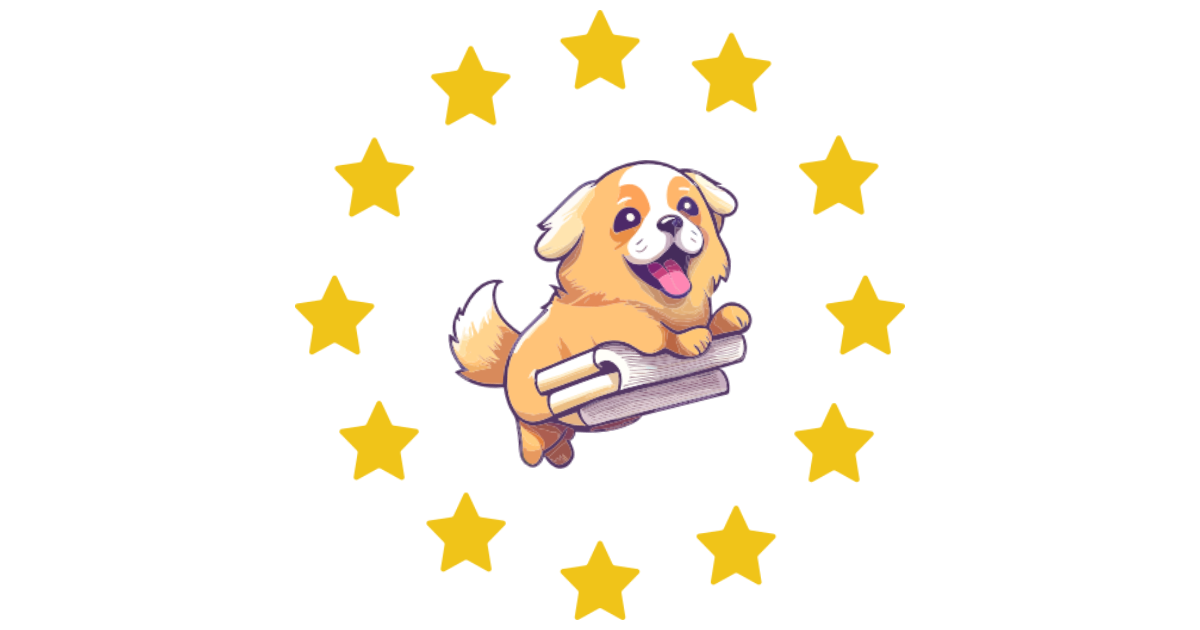Navigating the world of Data Subject Access Requests (DSARs) can feel like walking through a minefield. With privacy laws tightening worldwide, understanding and complying with DSARs is more crucial than ever. You're not alone if the term sounds daunting; many organizations are in the same boat, trying to ensure they're handling personal data correctly.
DSAR compliance isn't just about ticking boxes; it's about building trust with your customers and avoiding hefty fines. Whether you're just starting to wrap your head around what DSAR means or looking to refine your existing processes, you're in the right place. Let's dive into what DSAR compliance entails and why it's a non-negotiable in today's digital age.
Understanding DSAR Compliance
When you're diving into the realm of data protection, Data Subject Access Requests (DSARs) are a crucial component you can't afford to overlook. These requests, a right afforded to individuals under laws like GDPR in Europe and CCPA in California, allow people to ask organisations for copies of their personal data. But it’s not just about handing over information; it’s about doing it correctly and within the stipulated time frame.
First, you’ve got to identify a DSAR. It might come in through any channel—email, your website, or even social media. Recognizing these requests early is key to staying within legal timelines. Under GDPR, you have 30 days to respond. This tight timeline means you need efficient processes in place to locate, retrieve, and review the requested data.
Here's something that can't be overstated: accuracy and thoroughness are paramount. You need to ensure that you provide all the relevant data in a format that's accessible to the requester. This might involve converting data into common formats, like PDFs or Excel spreadsheets, and removing information related to other individuals to comply with privacy laws.
Moreover, documenting your DSAR process is not just good practice; it’s a requirement. This documentation will be your lifeline if you're ever audited or challenged. It proves due diligence and compliance, showcasing your commitment to data protection and privacy.
Investing in training for your team is also a smart move. Everyone should understand what a DSAR is, how to handle it, and the urgency it requires. This isn’t just about legal compliance; it’s about building trust. When individuals see that you're taking their requests seriously and handling their data with care, they're more likely to trust your organization with their information.
Remember, DSAR compliance is not a one-off task. It's an ongoing process that requires continuous attention and improvement. By staying informed and prepared, you ensure not just legal compliance, but also foster a culture of transparency and respect for privacy in your organization.
Importance of DSAR Compliance

In today's data-driven world, understanding the Importance of DSAR Compliance is crucial for your organization. Not only does it align with legal requirements, but it also fosters a culture of transparency and trust with your customers. When you prioritize DSAR compliance, you're showing that you value individual privacy rights and are committed to protecting personal data.
Legal Obligations
First and foremost, complying with DSARs is a legal necessity under various privacy laws like the GDPR in Europe and the CCPA in California. These regulations mandate that organizations must respond to DSARs within specific timelines—30 days under GDPR and 45 days under CCPA, with possible extensions under certain circumstances. Failure to comply can lead to substantial penalties, which can be as high as 4% of your annual global turnover or €20 million under the GDPR. Here's a quick glance at the potential penalties:
| Regulation | Maximum Fine |
|---|---|
| GDPR | €20 million or 4% AGT |
| CCPA | $7,500 per violation |
Building Trust
Beyond legal compliance, effectively managing DSARs plays a significant role in building and maintaining trust with your data subjects. When individuals see that you're transparent about how their personal data is used and that you're responsive to their requests, they're more likely to trust your organization. This trust is invaluable, as it can lead to increased customer loyalty and a positive brand reputation.
Strategic Advantage
Proper DSAR compliance also offers you a strategic advantage. In an era where data privacy concerns are at an all-time high, demonstrating your commitment to privacy can distinguish you from competitors. It shows potential customers that you're not only compliant with legislation but that you go above and beyond to safeguard their personal information. This can be a deciding factor for individuals choosing between your services and those of a competitor.
By understanding the importance of DSAR compliance, you can ensure your organization not only meets legal requirements but also enhances its relationship with individuals, ultimately benefiting your brand and bottom line.
Key Components of DSAR Compliance

When diving into the complex world of DSAR compliance, it's crucial to understand its key components. These elements not only ensure legal adherence but also foster a sense of trust between you and your data subjects.
Identification and Verification of the data subject making the request is your first line of defense against potential data breaches. You need to have robust mechanisms in place to verify the identity of the requester to ensure that the data is not handed over to the wrong person.
Next, Understanding the Scope of the Request is essential. Not all DSARs are created equal, and the scope can vary significantly. Whether it's access to personal data, correction, or deletion requests, you must clearly understand what is being asked to respond accurately and efficiently.
Timely Response to DSARs is not just recommended; it’s mandated by law. Under regulations like GDPR and CCPA, you have specific timelines within which you must reply to these requests. For example, GDPR requires organizations to respond within one month from the date of receipt. Failing to meet these deadlines can result in hefty penalties.
| Regulation | Response Time |
|---|---|
| GDPR | 1 month |
| CCPA | 45 days |
Secure Data Handling during the DSAR process is paramount to preventing data breaches. Ensure that the personal data is transmitted securely to the requester. Employ end-to-end encryption and secure channels for data delivery to maintain confidentiality.
Lastly, Record-Keeping and Documentation of all DSARs and the organization’s responses to them are vital. This not only helps in demonstrating compliance in case of audits but also in improving the DSAR process over time. Transparent record-keeping reflects your commitment to privacy and data protection.
By focusing on these key components, you’re not just ticking off boxes on a compliance checklist. You're building a stronger foundation of trust and transparency with your data subjects, essential in today's data-driven landscape.
Steps to Achieve DSAR Compliance

Achieving DSAR compliance may seem daunting, but breaking down the process into manageable steps can make it more approachable. By following these steps, you'll be better positioned to meet the compliance requirements laid out by regulations such as GDPR and CCPA.
Understand the Regulations
Firstly, it's vital that you deeply understand the specific privacy regulations that apply to your organization. Whether it's GDPR, CCPA, or any other data protection law, knowing the nuances will help you craft an effective DSAR strategy.
Create a DSAR Handling Process
Establish a clear process for handling DSARs. This process should include steps for:
- Identifying and verifying the identity of the requester
- Determining the scope of data covered by the request
- Collecting the relevant data
- Responding within the mandated timeframe
Efficiency and security should be at the core of your process to prevent any data breaches and ensure timely responses.
Train Your Team
Ensure that your team is well-trained on DSAR handling processes and understands the importance of data protection. Regular training sessions can keep your team updated on new regulations and best practices.
Implement Technological Solutions
Consider implementing technology solutions that can automate parts of the DSAR process. Automation can significantly reduce the time and resources required to respond to requests. Tools for data mapping, identity verification, and secure data storage are particularly useful.
Monitor and Review
Finally, regularly monitoring the effectiveness of your DSAR compliance process is crucial. This will help you identify areas for improvement and ensure that you're always compliant with current laws. Regular reviews can also prepare your organization for any changes in data protection legislation.
By focusing on these steps, you're not only working towards DSAR compliance but also reinforcing your organization's commitment to data protection and privacy.
Best Practices for DSAR Compliance

Achieving DSAR compliance isn't just about ticking boxes; it's about embedding a culture of privacy and transparency within your organization. Here are some best practices to guide you through the process.
Understand Privacy Regulations in Depth
Before anything else, ensure you have a thorough understanding of the privacy regulations applicable to your organization. This isn't just about knowing the GDPR or CCPA exists; it's about understanding the nuances and requirements of these laws as they apply to your specific operations.
Set Up a Clear DSAR Process
Having a clear, documented DSAR process is non-negotiable. This should include:
- Steps for identifying and verifying the identity of the requestor
- Timelines for responding to DSARs
- Roles and responsibilities of team members in the DSAR process
A streamlined process ensures you're not only compliant but also efficient in handling requests.
Implement Technological Solutions
In today's digital age, leveraging technology to automate the DSAR process is a smart move. There are several tools available that can help automate the identification, collection, and delivery of personal data. This not only reduces the manual labor involved but also minimizes the risk of errors.
Train Your Team
Training your team is crucial to ensuring everyone understands their role in the DSAR process and the importance of data protection. Regular training sessions keep the team updated on the latest regulations and best practices.
Regular Monitoring and Review
DSAR compliance isn't a one-time task. Regularly monitor your processes and review them to ensure they remain compliant with current laws and best practices. Changes in regulations, business operations, or technology may necessitate updates to your DSAR procedures.
By following these best practices, you're not just meeting legal requirements; you're also demonstrating a commitment to the privacy and trust of the individuals whose data you handle.
Conclusion
Navigating the complexities of DSAR compliance might seem daunting at first. Yet, it's within your reach when you embed a culture of privacy and transparency at the heart of your organization. Remember, it's not just about ticking boxes to meet legal requirements; it's about building trust by showing your commitment to protecting data privacy. By thoroughly understanding the regulations, setting up a streamlined DSAR process, leveraging technology for efficiency, and ensuring your team is well-informed and vigilant, you're not just complying with the law. You're setting a standard for excellence in data privacy that benefits everyone involved. Start taking the steps today to strengthen your DSAR compliance and watch as it transforms into a key asset for your organization.












